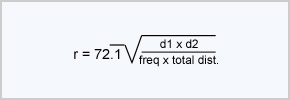- Resources
- » About Line of Sight
Understanding Line of Sight in Wireless Networks
A clear line of sight (LoS) is one of the most important conditions for creating reliable wireless links within your WISP or Wireless Backhaul links. All wireless signals are attenuated when they encounter obstructions. The goal for every WISP network designer is to reduce the amount of attenuation by deploying clear LoS links.
Despite what the term LoS implies-the ability to see from point A to point B without any obstructions, wireless line-of-sight requires more than being able to easily see from one location to another. Wireless signals travel in waves, not straight lines, which mean that the signal is radiated outwards from the antenna-not linearly.
Find below the main differences between LoS, nLoS and NLoS.

As you can see, the wireless equipment radiates out wider than a visual LoS. Therefore, there is a greater chance that the signal can be obstructed by objects as it travels to the end destination. Each link requires its own evaluation to determine whether a clear LoS can be achieved.
By understanding and calculating what is known as the Fresnel Zone, you can decide if your proposed wireless link will have sufficient signal strength for a reliable connection.
Fresnel Zone
The fresnel zone is a method of calculating the amount of anticipated clearance needed to prevent a wireless signal from being attenuated by an object in the path between the link.

The equation for calculating the required fresnel zone is:

In order to ensure an adequate connection, at least 60% of the calculated fresnel zone must be free from obstructions.
Try the fresnel zone calculator

